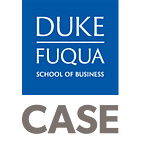Living Goods: Getting Ready for Scale
As part of this Scaling Snapshot, see also Living Goods’ Organizational Overview, Scaling Strategies, and Scaling Pearls of Wisdom. You can find the full scaling snapshot PDF here.
Living Goods was founded in 2007 by Chuck Slaughter, a successful serial entrepreneur. As a Board member of a company with franchise pharmaceutical shops in Kenya, Slaughter saw an opportunity to bypass a storefront model for one that uses community-based agents. He launched Living Goods with this model in mind, training community members (community health workers, or CHWs) to promote and improve maternal and child health in their communities and earn an income by selling from a “basket” of health-related products.
Key success factors in positioning Living Goods for scale included:
- Proving Demand: Lean start-up. With an unproven but promising approach, Living Goods initially decided to work with and through an existing international NGO (BRAC, which has an extensive network of CHWs). This initial partnership in Uganda allowed Living Goods to test its approach, limit up-front capital investments, and prove end-user demand before investing in fully implementing the model itself.
“We established a nimble culture from the start, focused on testing ideas fast and cheap and using real-world feedback to refine our strategies. Our unorthodox funding model is an essential component of that. By and large, we’re funded by successful entrepreneurs who believe in the power of applying business models to solve social problems…Instead of funding specific projects and outcomes, they provide core undesignated funding that allows us to be agile and respond to challenges and opportunities as they emerge” — Chuck Slaughter, Ashoka Interview on Forbes
- Establishing Financial Footing: Flexible capital. Slaughter’s reputation, approach, and ability to raise flexible grant capital allowed Living Goods to quickly build, test, and modify its model. [Read more about Living Goods’ success in raising flexible capital.]
- Proving the Model: Collecting evidence early. From the outset, Living Goods invested in building best-in-class evidence to inform model implementation and scale. In 2010, Living Goods secured funding from the Children’s Investment Fund Foundation (CIFF) to undertake a multi-year randomized control trial (RCT) on the CHW model in Uganda. The RCT provided evidence that the model reduced under-5 child mortality by 27% while costing less than $2 per capita per year for such impact. Around the same time, Living Goods’ data from the lighter-touch Kenya experiment showed significantly less health impact than the Uganda model. Based on this data, Living Goods quickly responded — shutting down the lighter model and establishing the Ugandan model as the core approach for scaling in Kenya and beyond.
Living Goods spent its first seven years pursuing these strategies, ultimately preparing it to begin to scale significantly around the year 2014. Click here to read about the ways in which Living Goods has scaled its impact, including the implications of these strategies for the organization.
Published March 2019. Find the full Scaling Snapshot PDF at https://rebrand.ly/livinggoodsscaling.
Authored by Erin Worsham, Kimberly Langsam, and Ellen Martin.
